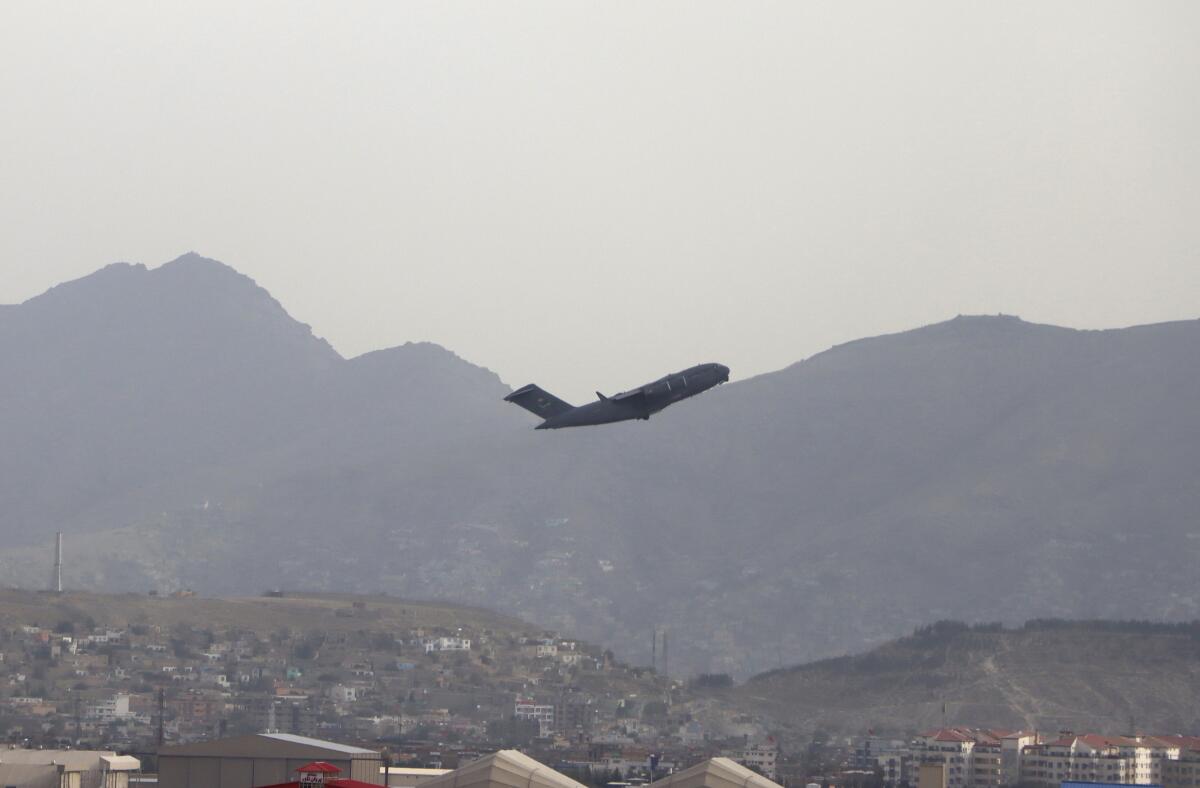Op-Ed: Lessons from Afghanistan for a high school history class

America’s schoolchildren don’t resist learning from history. Policymakers do.
President Biden ended a war in Afghanistan that his three predecessors pursued (and rued) for 20 years. As a young man he criticized a war in Vietnam supported by five presidents.
High school students want to love their country. They want to understand why America intervenes militarily in other nations, when Americans would not like anyone else doing that to them. If teachers explain this carefully, they can help students become hopeful citizens and give them tools to both advocate American values and avoid war in the future. It is hard to think of a nobler goal as this school year begins.
The chaotic withdrawal from Afghanistan last month provides just the latest opportunity to discuss U.S. ambitions and shortcomings. As someone who has taught history for several decades, I would offer the following three-week lesson plan to guide that conversation. Once 14-year-olds master the subject, they can share the lessons with politicians.
Week 1: The long view
Big-picture patterns give coherence to great masses of facts. Students better understand current events when they learn that the history of U.S. foreign policy divides neatly into two eras: neutrality and intervention.
George Washington (and a slew of others whose duels make for great theater in the classroom) articulated what he called the “Great Rule.” Washington’s rule would describe American history from 1789, when constitutional government began, to 1947. During the first two-thirds of our story, the federal government followed the same approximate path in the same general direction despite occasional obstacles and detours.
President Washington expressed the Founders’ consensus that Americans should sell products everywhere and intervene militarily nowhere. To ensure this, they opposed treaties that obligated them to rescue anyone else in a pinch. Washington’s farewell address in 1796 articulated this: “The great rule of conduct for us in regard to foreign nations is, in extending our commercial relations, to have with them as little political connection as possible.”
In 1917 and 1941, Woodrow Wilson and Franklin D. Roosevelt took the U.S. into wars that had already killed millions. Neither signed any treaty that obligated the country ahead of time. Both anticipated withdrawal when war ended. Both thought future defense treaties might be necessary in extremis, but signed none.
Week 2: The big turn
The U.S. switched its policy to interventionism at the start of the Cold War with Russia in 1947. President Truman believed America had no good choice but to take ongoing responsibility for international crisis management using military means. In simpler terms (students love simple terms), Truman believed America must sign treaties that keep boots on the ground in foreign countries.
The president asked Congress to support what historians call the Truman Doctrine. (Here it is encouraging to students to announce this will be on the test but not the Eisenhower, Nixon, Carter and Bush doctrines, as they reiterated Truman.)
The Missourian told legislators America must “help free peoples to maintain their free institutions and their national integrity against aggressive movements that seek to impose upon them totalitarian regimes.” After prolonged, bipartisan and entirely civil debate, Congress agreed.
Boots and alliances followed for 74 years. Truman’s words perfectly describe the American mission in Afghanistan that ended Aug. 30 when the last plane took off from Kabul.
The Truman Doctrine was devised to address a particular problem that ended long before this.
The Soviet Union had played the primary military role in destroying the Nazis, and Truman believed America must play the primary role in preventing Soviet domination of Europe afterward.
The expensive plan worked well for the problem it was designed to address. As geographical scope and military cost increased incrementally, it worked less well. Tolerably in South Korea, poorly in Vietnam. Unmoored from the Cold War after it ended, the doctrine failed altogether in the Middle East.
John Quincy Adams accompanied his father, John, to peace talks with England. He later predicted that if the nation ever veered from its Great Rule (for any length of time, we might add here), “she would involve herself beyond the power of extrication, in all the wars of interest and intrigue.... The fundamental maxims of her policy would insensibly change from liberty to force.”
The Founders believed America’s greatest contribution to global liberty was to demonstrate for others how a democratic government could improve daily life for its own citizens.
Week 3: The path ahead
Students love debates. Here I would pose the question, “Would America be better advised to spend $2.1 trillion on the next opportunity to save a nation from a failing government, or $2.5 trillion on overdue domestic infrastructure projects that engineers believe we need to keep bridges open?” If students pick the latter, I would ask how they would describe their doctrine for America’s role in the world.
Discuss among yourselves.
Elizabeth Cobbs is a professor of history at Texas A&M University and the author of “American Umpire.”
More to Read
A cure for the common opinion
Get thought-provoking perspectives with our weekly newsletter.
You may occasionally receive promotional content from the Los Angeles Times.










